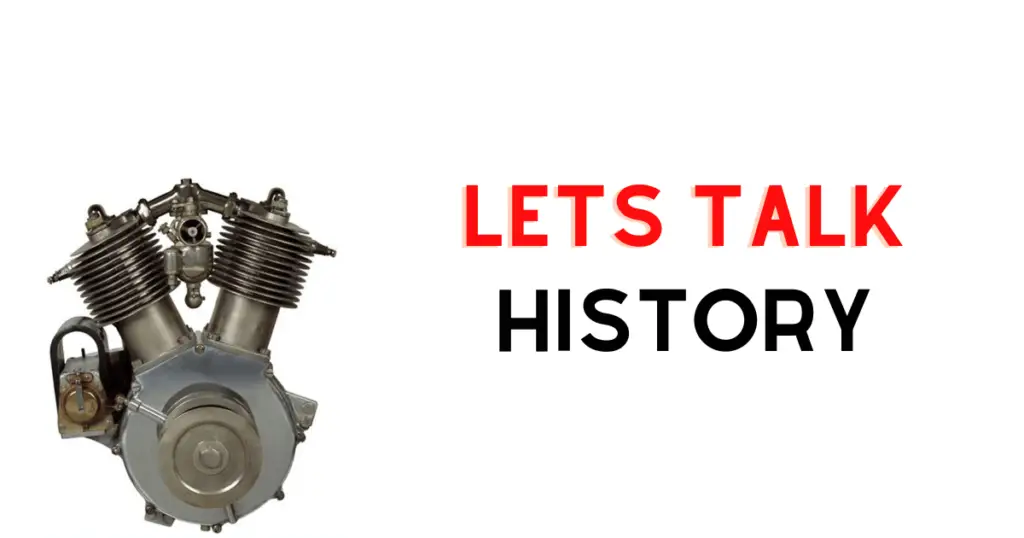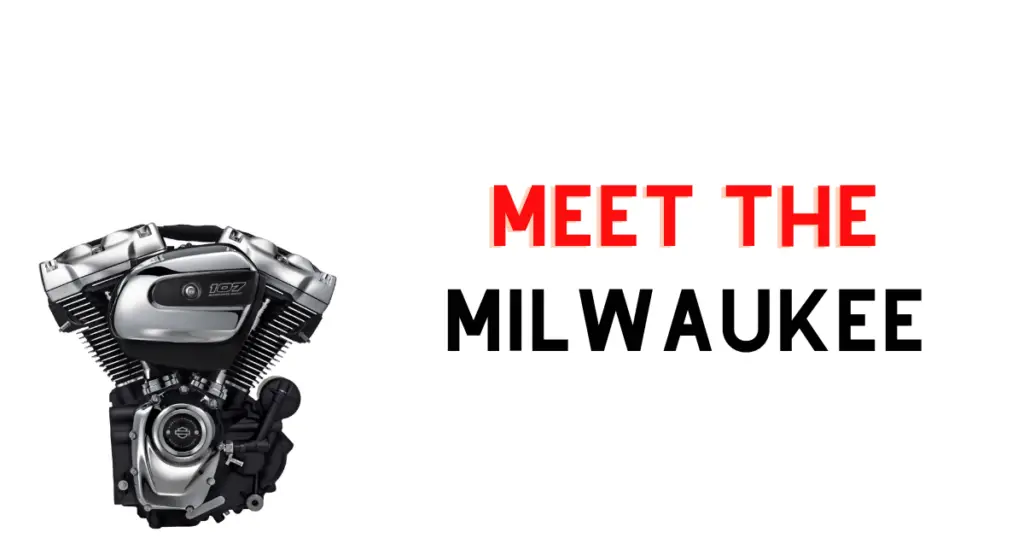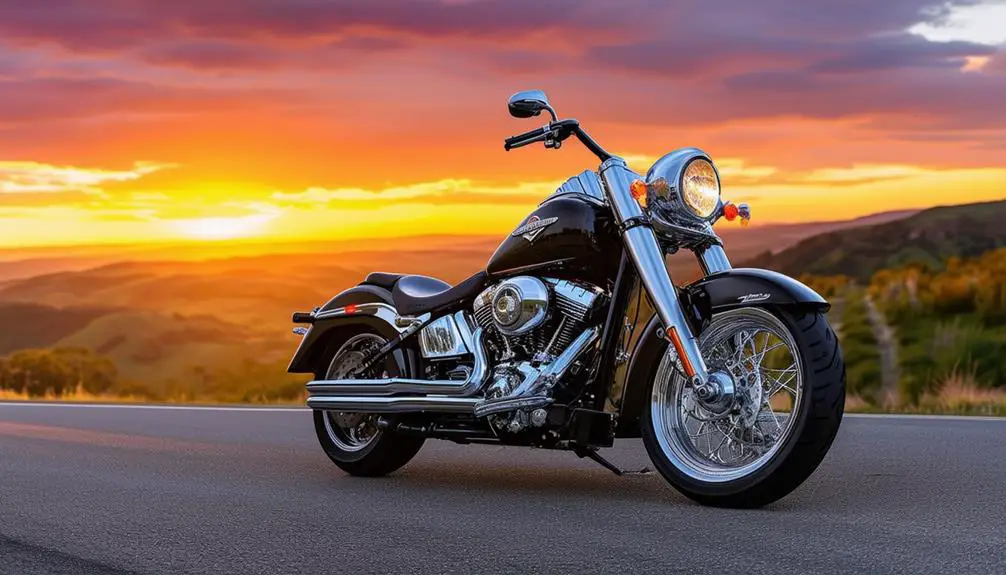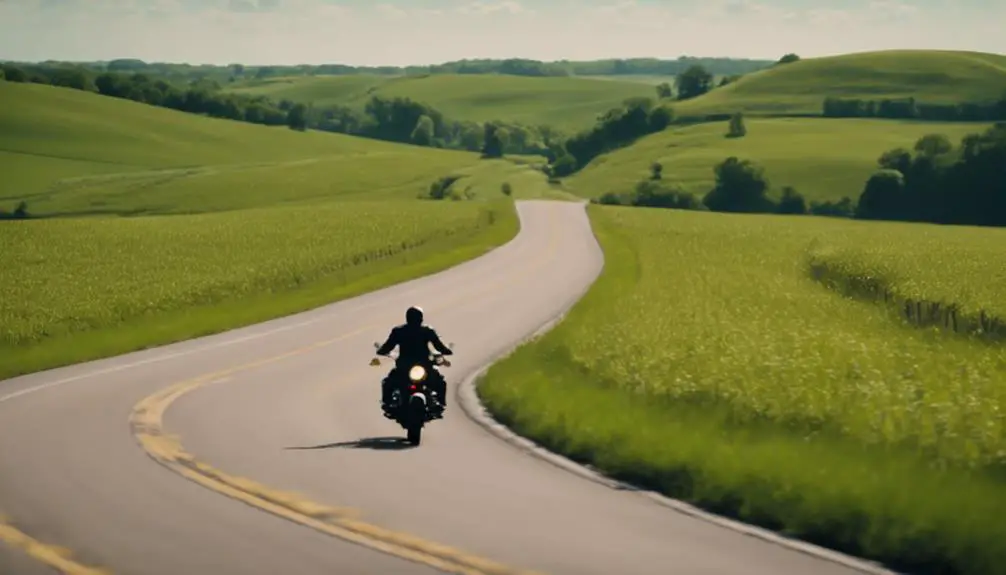Harley-Davidson, a name that resonates with motorcycle enthusiasts around the world, is synonymous with a rich legacy of iconic engines that have powered its bikes for over a century. Your ride is more than just a machine; it’s a piece of American history that rumbles to life with the turn of a key.
Understanding the evolution of Harley engines is to journey through the progression of engineering excellence, cultural milestones, and the spirit of freedom these engines roar.
From the humble beginnings in a small Milwaukee workshop, where the Harley family fitted handcrafted flathead engines to bicycles, to the advanced powerhouses produced in modern facilities, the story of Harley engines is as much about ingenuity as it is about the open road. Each engine, from the early single-cylinder models to the muscular V-twins that thunder beneath you today, tells a story of a company’s dedication to performance and its riders’ unwavering loyalty.
As you traverse the timeline, you’ll see names like Knucklehead, Panhead, and Shovelhead not just as parts of a motorcycle, but as chapters of a legacy that continues to influence the world of motorcycling. Harley-Davidson’s engines by year reflect a storied past, a dynamic present, and a promising future. With every ride, you’re not just experiencing the raw power of your motorcycle’s engine; you’re experiencing a piece of a story that’s still being written.
Early Harley-Davidson Engine History

This section will take you through the inception and evolution of Harley-Davidson’s engines from their rudimentary beginnings to the more advanced designs of their early years.
Birth of Harley Engines
In 1903, you would find the Harley family meticulously crafting engines in a small Milwaukee workshop. Their endeavors marked the onset of what would become a legendary motorcycle brand. The very first Model 1 engine, derived from the De Dion-Bouton design, was a modest single-cylinder power unit used to propel a custom-fitted bicycle.
Early Engine Designs
As you move through the timeline, in 1909, Harley-Davidson introduced an engine design that would influence the next several decades of motorcycle engineering — the F-Head (also known as the IOE, for intake over exhaust). This engine combined the benefits of both flathead and overhead valve designs with intake valves located atop the cylinders and exhaust valves housed within the cylinder block, a layout commonly referred to as “pocket valve.” It set a standard in the emerging era of motorized biking.
Iconic V-Twin Engines
Harley-Davidson has a rich history of V-Twin engines with distinct characteristics and advancements. The iconic V-Twin has long been a symbol of the brand’s commitment to power and performance.
Introduction to V-Twin
The V-Twin engine, characterized by its two cylinders arranged in a V configuration, initially appeared in a Harley-Davidson motorcycle in 1909. This design allowed a compact engine layout, providing more power and torque. With its 45-degree angle between the cylinders, the V-Twin is known for its deep, resonant rumble, which became a hallmark of Harley-Davidson motorcycles.
Innovation and Evolution
Harley-Davidson’s V-Twin engines have undergone significant evolution over the years. In 1936, the Knucklehead engine was introduced, and it was a groundbreaking OHV (Overhead Valve) design that set a new standard for power in V-Twin engines. Your V-Twin experience continued to improve with the introduction of the Panhead in 1948, which featured aluminum cylinder heads and improved cooling. The evolutionary timeline didn’t stop there, with the Shovelhead making its debut in 1966, boasting more power and an updated, sleeker profile.
The V-Twin Legacy
Harley’s V-Twin engines are an enduring part of motorcycling lore. Throughout different eras, names such as Knucklehead, Panhead, and Shovelhead have entered the lexicon of riders worldwide. With each iteration, these Big Twin engines maintained the classic 45-degree, V-twin configuration, a testament to the brand’s commitment to its iconic engine design. Today, the legacy of these engines continues to live on in the roar of every Harley-Davidson that cruises the open road.
Evolution and Refinement Over Time
In this section, you’ll discover how Harley-Davidson has continuously refined its engine designs, enhancing power and reliability through the Evolution series, Twin Cam development, and the introduction of the Milwaukee-Eight engines.
Evolution Series

The Evolution engine, also known as the Evo, was a significant milestone in Harley’s history. It was introduced in 1984 and rapidly became known for its improved reliability and performance over its predecessor, the Shovelhead. Variants of the Evo engine, produced up to 1999, are highly regarded, especially the models from the mid to late 1990s. They offer a balance of mature technology and historical appeal.
- Evo Engine Specs:
- Years Produced: 1984-1999
- Cubic Inches: Initially 1,340 cc (82 cu in)
Twin Cam Development

Harley-Davidson’s next evolution of engines, the Twin Cam, emerged with the Twin Cam 88 in 1999. It brought enhancements in power output and smoothness of operation. Over time, the Twin Cam series evolved further, with the Twin Cam 96 arriving in 2007, presenting increased displacement and a jump in performance.
- Twin Cam Milestones:
- Twin Cam 88: 1999-2006
- Twin Cam 96: 2007-2017
- Features: Improved power and durability, more cubic inches
Related reads:
– 7 Harley Twin Cam Years to Avoid (+ Their Problems, and Why)
– Is the Harley 103 a Good Engine? Yes, No, Maybe So
Milwaukee-Eight Revolution

The latest in the lineage is the Milwaukee-Eight engine, introduced in 2017. It marked a substantial progression with more power, reduced vibration, and a smoother ride. The Milwaukee-Eight engines come in different cubic inch variants, signifying Harley’s commitment to customization and performance.
- Milwaukee-Eight Highlights:
- Launch: 2017
- Enhancements: More valves, refined power delivery
- Versions: Various cubic inches for rider preference
Related reads:
– Is the Harley 107 a Good Engine? Maybe (and Here’s Why)
– Is the Harley 114 a Good Engine? Yes, No, Maybe So (and Why)
Modern Harley Engine Technology
Your ride is more than just about getting from point A to point B; it’s also a manifestation of engineering ingenuity. Modern Harley-Davidson engines are a culmination of performance, innovation, and cutting-edge technology, personifying the brand’s commitment to motorcycling excellence.
Innovations in Modern Design
The latest Harley-Davidson engines boast significant technological advancements. Aluminum heads and hydraulic valve lifters feature prominently, contributing to lighter weight and overall efficiency. Another milestone is the introduction of overhead camshafts and variable valve timing (VVT), which adapt to your riding style for optimized performance at varying speeds.
Revolution Series
The Revolution engine series, developed in collaboration with Porsche, propelled Harley into the modern era. This series marked the first use of liquid-cooling in Harley engines, enhancing thermal management and allowing for consistent performance in diverse conditions. With your grasp on the throttle of a Revolution-powered bike, you experience a harmonious blend of tradition and modern technology.
New Era Engine Overhaul
Crowning the brand’s engine line-up is the Revolution Max, the latest powertrain technology in Harley’s arsenal. It’s designed to offer you a robust power curve with features like overhead valves, more efficient combustion, and improved cooling systems. What sets Revolution Max apart is its lighter weight and rigid construction, which translate into a motorcycle that’s not only powerful but also agile and responsive to your riding commands.
Overview of Engine Specifications and Performance
When you’re examining the specifications and performance of Harley-Davidson engines through the years, you’re essentially exploring the evolution of power, torque, and design. This section will help you grasp the core concepts of engine output and the distinction between power and torque, which are pivotal to your understanding of what makes these engines stand out.
Understanding Engine Output
To fully appreciate what your Harley-Davidson engine is capable of, you need to understand engine output, particularly horsepower (hp) and torque. Horsepower is a unit of measurement that quantifies the overall power an engine produces. For instance, the iconic Knucklehead engine, produced from 1936 to 1947, was marketed in 61 and 74 cubic inch versions, with the ability to deliver a certain horsepower, specific to each model.
On the other hand, torque refers to the twisting force the engine generates, often felt as the immediate power upon acceleration. It’s measured in pound-feet (lb-ft) or in Newton-meters (Nm) in metric. Engine torque is an aspect that heavily influences your riding experience, especially when it comes to accelerating from a standstill and cruising at low speeds. Harley-Davidson’s engine designs often focus on producing high torque to ensure a smooth and powerful ride.
Comparing Power and Torque
When you’re comparing engines, specifically the power and torque ratings, you’re looking at two sides of the same coin:
- Power (Horsepower): This figure shows you how much work your engine can perform over time. Think of it as the top speed you can reach on a straightaway.
- Torque: This number signifies how quickly an engine can move your bike from a stop. The higher the torque, the faster you’ll feel the surge when you twist the throttle.
Remember, both power and torque are essential for different aspects of riding. You might prioritize horsepower for high-speed performance and torque for urban agility and confident overtaking. Each Harley-Davidson engine over the years has been engineered with a unique balance of these features to match various riding styles and preferences.
Harley-Davidson Models and Available Engine Types
As you explore the world of Harley-Davidson, you’ll find a rich tapestry of models each with its unique engine type. From the roaring Sportsters to the majestic Touring and Softail models, and the exclusive Custom Vehicle Operations (CVO) motorcycles, each has a heart of steel and power that is emblematic of the Harley-Davidson legacy.
Sportster Series
The Sportster Series is iconic, featuring engines known as the Sportster Evolution. This line has historically offered a variety of engine sizes, commonly starting at 883cc and also including a 1200cc option. Traditionally configured as a V-twin engine, Sportsters are beloved for their agility and classic Harley roar.
- Engine Size: 883cc, 1200cc
- Notable Models: Iron 883, Sportster 1200
Touring and Softail Models
Your experience with Touring and Softail Models is defined by the frame and the engine size working in harmony for a smooth ride. The Softail models give you a classic look with hidden rear suspension, while the Touring models are equipped for the long haul with larger saddlebags and enhanced comfort.
- Engine Size: Ranging from 107 to 114 cubic inches
- Touring Models: Road King, Street Glide
- Softail Model: Fat Boy, Heritage Classic
Custom Vehicle Operations (CVO)
For those seeking the pinnacle of Harley-Davidson craftsmanship, the CVO models stand atop. These limited-edition motorcycles boast larger-displacement engines, often up to 117 cubic inches, and come with premium features and finishes that set them apart.
- Engine Size: Typically 117 cubic inches (since the implementation of the Milwaukee Eight line of engines)
- Exclusive Features: Custom paint, high-performance components
- CVO Models: CVO Street Glide, CVO Limited
In each of these categories, your motorcycle stands as a testament to the legacy and innovation of Harley-Davidson engines through the years. Whether you favor the nimble Sportster, the commanding presence of Touring and Softail models, or the elite CVO, there’s an engine and model that’s tailored for your ride.
Frequently Asked Questions
Harley-Davidson’s engines have evolved significantly over the years, each carrying its unique set of features, from vintage to modern times. If you have questions about these engines, their timelines, sizes, or specific models, the following sections will provide detailed answers.
What are the distinguishing features of vintage Harley engines from different years?
Vintage Harley engines, like the Flathead, Knucklehead, Panhead, and Shovelhead, each have unique characteristics. For instance, the Flathead, produced until 1948, was recognized for its durability while the Panhead, which came after and lasted until 1965, was known for its aluminum heads and improved lubrication system.
Can you list the timeline of major changes in Harley engines over the years?
The timeline of major changes in Harley engines begins with the early single-cylinder engines from 1903. The V-twin was introduced in 1909 and was followed by the Flathead in 1929. The Knucklehead came in 1936, the Panhead in 1948, the Shovelhead in 1966, the Evolution engine in 1984, and the Twin Cam in 1999.
Which Harley engine models should be avoided due to known issues?
You should avoid certain Twin Cam engine models from 1999 to 2006 due to a cam chain tensioner system that is prone to failure. This can lead to rapid wear and potentially serious engine damage.
Could you provide an overview of the engine sizes Harley-Davidson has offered through history?
Harley-Davidson has offered a variety of engine sizes through the years, starting from 25 cubic inches (410 cc) on early models, to the more common 74 cubic inches (1,200 cc) on Knuckleheads and Panheads, and up to 103 cubic inches (1,690 cc) and beyond on more recent models.
In which models and years can I find the Harley 103 engine?
The Harley 103 engine, also known as the Twin Cam 103, was introduced in 2012 and can be found in various models such as the Touring and the Trike lines up until the introduction of the Milwaukee-Eight engine in 2017.
What characteristics define the Harley Evolution engine, and in what years was it produced?
The Harley Evolution engine, produced from 1984 to 1999, is defined by its reliability, ease of maintenance, and air-cooled V-twin design. It was a significant improvement over its predecessor, hence the name “Evolution,” and powered a wide range of models during its production years.







Leave a Reply
You must be logged in to post a comment.